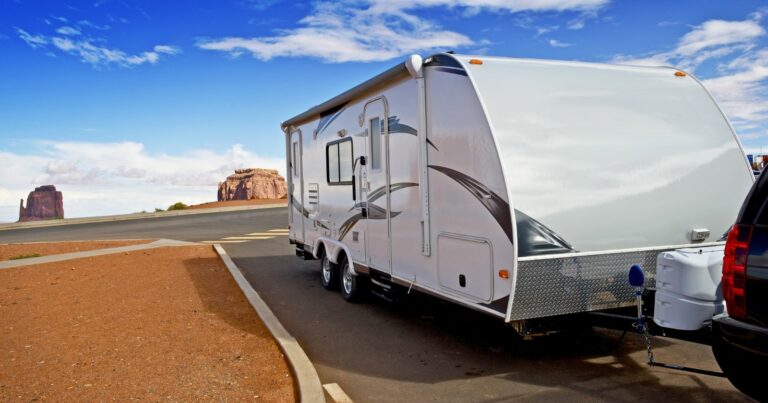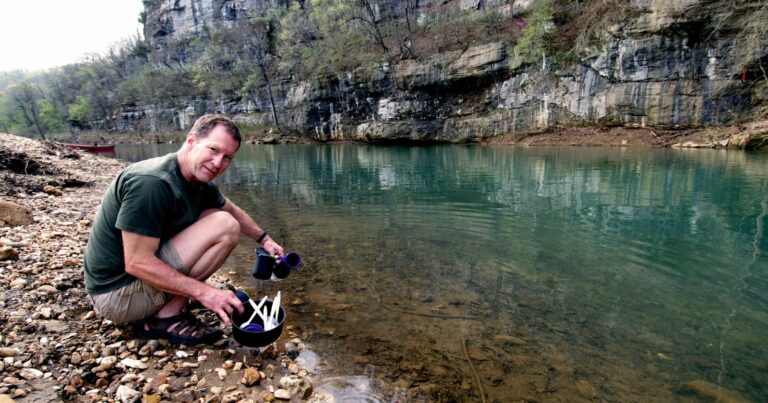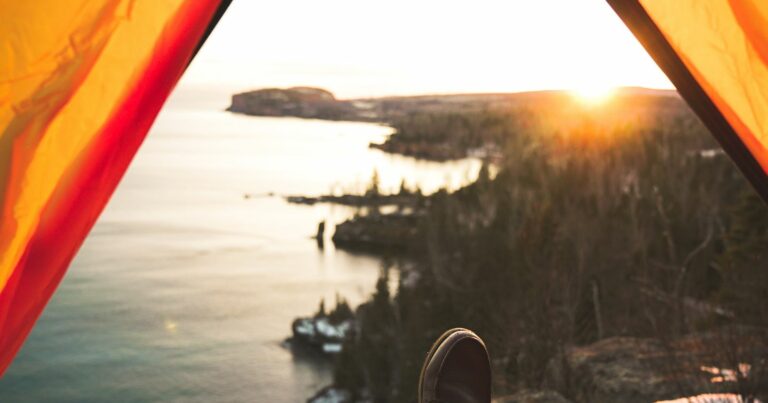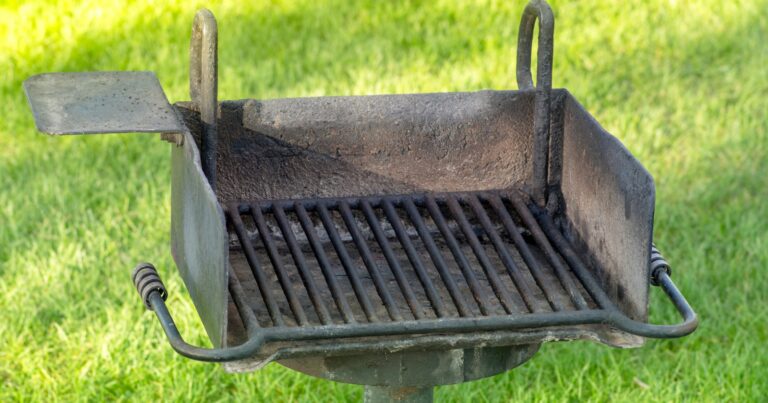Is Setting Up a Camping Tent Difficult?
The sun is going down and the forest comes alive with sounds. You peer out your tent door at the darkness, heart pounding. Will you make it through the night in one piece?
Setting up a tent can feel daunting, especially for first-time campers. You imagined yourself relaxing around a cozy campfire, notscratching your head over baffling poles and flaps. But with some simple preparation, setting up a tent does not have to be stressful.
The key is to start by picking an accessible site and double-checking your gear. Choose a flat space near the parking lot, so hauling equipment is easy. Ensure your tent, poles, stakes and mallet are handy before pitching. Review the setup directions.
As long as you have the right gear and follow some common tips, erecting a tent can be a breeze. Wear sturdy boots to avoid ankle rolls. Speak with park staff for guidance. Separate clean and dirty clothes in garbage bags. Keep food contained. A well-stocked first-aid kit provides comfort too.
By nightfall, you’ll be snug in your home sweet tent, ready to relax after a job well done. The sounds of the forest will lull you to sleep as you dream about adventures yet to come.
Do’s and Don’ts for Easy Tent Setup
Setting up camp doesn’t have to be stressful or fruitless. Follow these tips to give yourself the best shot at tent pitching success:
The Do’s
Pick an Accessible Campsite
Choose a flat, debris-free space to set up your tent. Be near the parking lot while you’re still learning. Hauling gear long distances adds unnecessary effort.
Prep Your Gear Ahead of Time
Ensure you have all required tent components like poles, stakes, and fly. Review the setup directions and organize your equipment before heading to the site.
Talk to the Experts
Ask park rangers and camp hosts for pointers, especially regarding suitable campsites and dealing with wildlife. Their expertise can ease frustrations.
Use Proper Footwear
Wear sturdy hiking boots or shoes to avoid rolled ankles or injured feet while moving around the campsite. Sandals offer little protection in the wilderness.
The Don’ts
Don’t Leave Food Unsecured
Store all food including trash in a sealed container or car. Uncontained edibles lure curious creatures to your camp.
Don’t Ignore Weather Forecasts
Check the extended outlook. Pick a tent designed for expected conditions like rain or high wind. Expect weather changes.
Don’t Leave Fires Unattended
Fully extinguish any campfire before bed or leaving camp. Supervise it closely while burning. Have water on hand.
Don’t Disrespect Nature
Follow leave no trace principles. Don’t harm vegetation or wildlife. Pack out all trash. Help preserve natural areas.
Picking a Tent Site
Choosing the right location sets the stage for simplified tent setup. Keep these factors in mind when selecting a spot:
- Accessibility – Pick a site near parking or trails to avoid long gear hauls. Being close to help can be useful for beginners too.
- Level Ground – Pitched on a slant, tents are unstable and sleep can be uncomfortable. Find a flat, debris-free area if possible.
- Weather Exposure – Consider wind patterns, sunlight, precipitation, and drainage. Position the tent appropriately or improve the site.
- Surroundings – Watch for overhead branches, sharp rocks, and obstacles. Check for ants, poisonous plants, or holes.
- Leave No Trace – Use designated sites when available and don’t disrupt the environment. Follow camping regulations.
Take time to choose a suitable spot before unpacking your tent. It will make setup smoother and your first night more pleasant.
Tent Setup 101
With a proper site selected, it’s time to pitching your tent. Follow this basic process for getting camp ready:
1. Assemble the Tent Frame
Use the instructions to connect the poles together correctly. Shockcord constructions are easiest for beginners. Read each step carefully and work on a debris-free tarp or footprint if needed.
2. Stake Down the Tent
Anchor the four corners of the tent bottom into the ground using provided stakes. In hard ground, use rocks or logs to securely weigh down the area.
3. Insert the Poles
Thread each assembled pole carefully through the proper sleeves or clips on the tent roof. Getting this step right ensures the tent holds its shape.
4. Stake Out Vestibules
If your tent has awning-like vestibules over the doors, stake them out now for more livable interior space. Just don’t block the doorways.
5. Attach the Rainfly
Drape the water-resistant rainfly over the staked tent, positioning it precisely over seams and openings. Connect to the roof frame as specified.
6. Adjust Guylines
Utilize all guylines and ground anchors so the rainfly doesn’t touch the tent itself. Tighten lines until the fly is taut.
7. Seal Seams
Close all zippers and entrances to seal out moisture if desired. Seam tape or sealant can waterproof vulnerable spots as extra protection.
And just like that, your temporary wilderness home awaits! Stepping back to admire your handiwork makes all that effort worthwhile.
Common Setup Pitfalls
While pitching a tent is straightforward in theory, beginners often stumble in practice. Avoid these common mistakes for smoother sailing:
- Forgetting poles or parts
- Losing small pieces in the process
- Failing to stake early for stability
- Not reading directions fully
- Ignoring site prep and clearance
- Skipping crucial guylines
- Inserting poles in the wrong sleeves
- Overtightening or loosening adjusters
- Leaving doors unzipped overnight
- Entering before securing rainflies
Stay organized, follow all instructions, and maintain attention to detail throughout the setup process. Doing so will preclude many frustrations and delays for first-time tent builders.
Tips for Tent Pitching Success
Setting up camp is less daunting when you’re prepared both mentally and physically. Keep these tips in mind:
Check Your Gear Thoroughly
Ensure no parts are missing and read the setup instructions at home so there are no surprises.
Use Teamwork
Having a buddy makes the job easier. One person can work the poles while the other stakes and guides.
Pitch in Daylight
Aiming to finish before dark gives you time to correct mistakes and adjust lines properly.
Allow Extra Time
Rushing leads to errors. Give yourself ample time for site selection and assembly.
Expect Practice
Don’t be discouraged if pitching perfectly doesn’t happen on the first try. With each effort, it gets easier.
Special Considerations
Some campers require extra accommodations for a safe, enjoyable tent experience:
Families – Choose a large tent with room to spare and bring kid-friendly accessories. Teach youngsters setup basics.
Groups – Cluster multiple tents together with adjacent social areas. Coordinate for efficiency. Have backup supplies.
Disabled – Opt for tents with high ceilings to aid mobility. Flat, smooth sites are essential. Keep needed medical items handy.
Adjust your process and expectations based on your camping crew’s unique needs. Don’t be afraid to ask fellow campers for a hand too if necessary.
Frequently Asked Questions
Q: How do I find a suitable campsite to pitch my tent?
A: Look for a flat, debris-free area near parking and trails if possible. Check for potential weather exposures or hazards and follow leave no trace principles. Talk to park staff for guidance identifying designated tent sites.
Q: What if I’ve lost or forgot a tent part while camping?
A: First, thoroughly double check your gear in case you overlooked the component. If it’s missing, check with neighboring campers to borrow or replace the part. Improvising with available materials is also an option for minor pieces.
Q: Why does my tent sag and feel unstable when I set it up?
A: Failing to stake down and tension the tent early in the setup can lead to a weak pitch. Always secure the four corners first before inserting poles and attaching the fly for maximum structure integrity.
Q: How can I prevent tent pole breakage when camping?
A: Avoid forcing poles that don’t slide easily into sleeves or bending them past their natural curve. Don’t lean heavily on the tent. Loosened shock cord and cracked poles should be replaced immediately. Handle components gently.
Q: Is it safe to set up my tent near trees or under branches?
A: Generally, no. Falling debris or sap can damage tents, and roots and rocks make leveling difficult. The exception is using trees to anchor guylines or tarps. Just don’t tie lines that may hammock the tent walls.
Final Pitching Pointers
With preparation and persistence, tent setup gets easier each time. Remember these last tips:
- Stake early for stability and work from the bottom up.
- Treat your tent gently – no horseplay or leaning on the poles.
- Allow the tent to weather overnight before packing up.
- Roll tents loosely when taking them down.
- At home, air out and clean your tent before storing.
The sense of accomplishment after successfully pitching your own tent makes the effort rewarding. You’ll gaze up at the stars from the cozy haven you built, rested and ready for adventure. Camping independence awaits!







